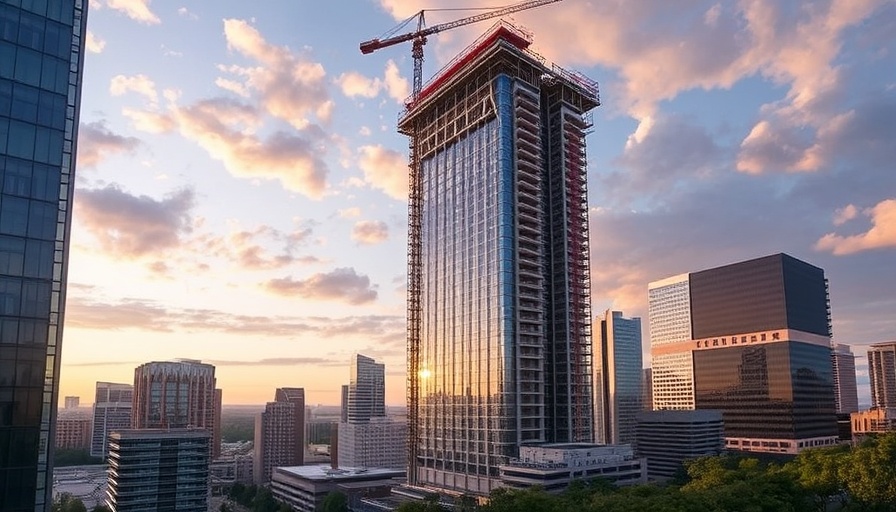
Atlanta's Newest Icon: Meet the 1072 West Peachtree Skyscraper
As construction progresses on the 1072 West Peachtree skyscraper in Atlanta, excitement and anticipation grow over this architectural marvel. Designed by TVS, this glass-clad residential tower is not just a record-breaker; it's set to redefine how urban living and working coalesce in a bustling metropolis.
The Vision Behind 1072 West Peachtree
This 60-story skyscraper, developed by the Rockefeller Group, represents a significant leap in Atlanta's skyline, marking the tallest building to rise in the city in over 33 years. With construction exceeding the 20th floor, it is rapidly becoming a landmark, boasting a height of 228 meters (749 feet). Its unique division into three main volumes — a 9-story parking podium, an 8-story office block, and the soaring residential tower — showcases thoughtful design that emphasizes both functionality and aesthetics.
A Blend of Work and Play: The Building's Unique Amenities
One feature that sets 1072 West Peachtree apart is its commitment to mixed-use space. The 10th floor promises not just living space but also recreational amenities like fitness areas and the "largest outdoor amenity deck" in Atlanta. This focus on well-being and community highlights the evolving needs of modern urban dwellers, especially digital nomads who require spaces that foster productivity and relaxation alike.
Why Residential Spaces Matter in Urban Design
As cities become more populated, residential spaces on high-rise buildings, such as the 1072 West Peachtree, play a crucial role in urban design. With commercial dining and retail spaces at the ground level and a strategic design that separates lobbies for residents and office workers, the skyscraper exemplifies how to create inviting environments that serve various functions. For digital nomads, having access to a mixed-use environment can significantly improve the work-life balance, blurring the lines between home, work, and leisure.
Historical Context: Atlanta's Architectural Landscape
The Bank of America Plaza currently reigns as Atlanta's tallest building at 312 meters (1,023 feet), but the new skyscraper indicates a shift in the city's architectural direction. The last notable addition to the skyline before this was in 1990, making the 1072 West Peachtree construction a noteworthy event. As cities continue to evolve, innovations in architecture reflect broader societal trends toward sustainable living and enhanced communal spaces.
Looking Ahead: Future Trends in Skyscraper Development
Innovation in skyscraper design is crucial as urban populations continue to surge. Future projects will likely integrate more sustainable technologies, focusing on energy efficiency and well-being. Skyscrapers like 1072 West Peachtree may pave the way for these trends, particularly appealing to those in search of comfortable, integrated living and working conditions.
Conclusion: What to Expect from 1072 West Peachtree
As the tallest residential tower in Atlanta nears completion in 2026, the implications for urban living are profound. With its sophisticated design and array of amenities, 1072 West Peachtree stands to be more than just a new building; it is a testament to the future of urban spaces informed by the needs of modern lifestyles.
For those looking to adapt their remote workspaces and lifestyles in harmony with innovative urban environments, keeping an eye on projects like this could inspire future developments in their professional settings.
 Add Row
Add Row  Add
Add 




Write A Comment